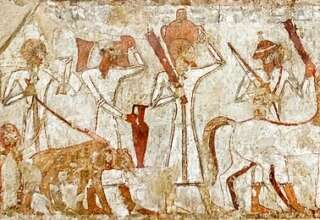
Friendships between men
While women emphasize in their friendship talking and emotional sharing, men emphasize activities and doing things together (Caldwell & Peplau, 1982). The tendency of men to be relatively reluctant to engage in self-disclosure of personal information, as compared to women, was documented widely (Bowman, 2008). Furthermore, sex role expectations appear to prohibit displays of emotional vulnerability among men. Males report less intimacy in same-sex friendship than do females, whereas femininity (among men) was positively associated with intimate friendship (Williams, 1985). Men who disclose more experienced their relationships with other men as closer (Bowman, 2008). It was found that “two masculine expectations: one behavioral (stoic), the other attitudinal (anti-feminine) influence different forms of intimacy between friends (instrumental, expressive)” (Migliaccio, 2009, p. 226). The most common explanation for this gender difference is that self-disclosure and intimacy may be seen as unmanly. One study showing indirect support for this idea found that emotional restraint and homophobia toward gay men provided the most explanatory power for gender effects on both intimacy and support in men’s best (heterosexual) friendships (Bank & Hansford, 2000).
Men with high power motivation tend “to experience friendships in an agentic manner, understanding them in terms of opportunities to take on dominant, controlling, organizational roles” (McAdams et al., 1984, p. 835). This type of men was found to report more large-group interactions and less dyadic interactions than do men with low power motivation. Furthermore, power motivation among men was found to correlate with feelings of guilt and frustration within friendships (McAdams et al., 1984). As regarding tensions within same-sex friendships, it was suggested that tensions often associated with cross-sex friendships – such as jealousy, sexual attraction, variations in communication patterns, and attributions as to their “real” nature and purposes – occur in same-sex friendships as well (Arnold, 1995). In contrast, it was postulated that “strong emotional attachments between men could contribute not only to enriching men’s emotional lives but also, and above all, to erasing sexism, racism, and homophobia from our societies” (Armengol-Carrera, 2009, p. 335). It thus seems that friendships among men could play a fundamental role in promoting greater social equality be more fictional than reality, like when the number of available people is limited or the social constraints governing friendship pattern rigid (Krappmann, 1998). For the present study, a short definition of friendship, like “a valuable, reciprocal, close relationship” (Devere, 2010, p. 25) suffices.
There is much less research on friendship than on culture and the existing studies are dispersed among various academic fields. I will now turn to the description of an instance from the friendship, which will be followed by the discussion of selected studies on patterns of friendship and intercultural friendship.
Stories of friendship: “Garage of Peace”
By the end of 2011, I had stopped collecting stories, but I decided to make an exception for the following story, which provides more insight in Palestinian-Israeli relations, in the way in which honor, power and occupation intertwine, and in the societal gap that needed to be bridged in order to create this intercultural friendship. Bashar, owner of the “garage of peace”, shared a rare instance in which a Jewish Israeli client touched his honor and triggered a wave of anger, which was expressed in the form of a political monologue. The reason for sharing the story conveyed not only Bashar’s wish to be understood, but also his aspiration to be a good friend and contribute meaningfully to my success in my studies. In fact, the communication around this story turned out to be instrumental to the friendship. I will present the story as articulated, despite its wordiness, since I find it important to be loyal to the way it was told.
Almog, January 2012. We met at a petrol station with internet connection, since we had planned to buy online flight tickets for our next trip to Europe. Despite the urgency of our plans, Bashar found it more important to clarify to both my teacher and to me what honor meant for him and other Palestinian Bedouins. He dictated the following tale (in Hebrew, which I instantly translated to English).
“Once upon a time I was standing next to the garage. Then came someone Jewish. I worked on his car and he still had 200 NIS to pay. He did not have enough money with him, so I told him to come back the next day. The next day he came with his father. I had a good mood. His father was religious. So I finished the work and he did not give me the money. His father told me and asked: “what is ‘garage of peace’?” I said: “that is a garage in which Jews and Palestinians can meet together”. He said “the peace you speak about is that you will not be in this country.” I replied: “You think I open a garage in your home?” He: “No, this is a place for Jews. God gave this land to the Jews. You will only leave by force.” I was so angry and said: “Listen, I know that I want to talk nonsense with you; so that’s what I will do. Think that this is the opposite of what I believe. According to religion, you and we are from the same father. Now you have power, and we do not have power. Consider that we are the children of Hagar, the daughter of the Pharaoh, which he gave as a present to Abraham and from whom came Ismael. The story of the Arabs started that way. Let us see what you did and what we did.
We are by now 23 countries; the smallest is as least as big as Israel. We had the greatest emperor in the greatest time. We made a religion for more than a milliard of people. There are 56 Islam countries. During this time we talk about, where were you? Now you have one country, Israel. Let us think of this country. Israel has 51% desert, 22.5% occupied territories. In Israel, there are 5.5 million Jews and 5.5 million Arabs. More than half of the country’s money goes to the army. Think what would have happened without American money; what would the army do? You think that God made all people in his shape, so that they can help the Jews, while you think they are not people – ‘goyim’? Let us forget religion and talk about history. Everywhere you made problems. Everywhere they wanted to kill you; from Iran, to Nebuchadnezzar in Iraq, the Russians, the Germans and more and more. Did you not sit down once and think why this happens? There are now in the whole world 15 million Jews and the children of Hagar are 250 million.
As regarding the money, you think you have more money than the Arabs do. You forgot that the Arabs have below the desert money (petrol). There is enough to give all Arabs for 50 years $1000 or more, each month per person. You were strong when you stopped talking rubbish about religion. Therefore, you have a modern state. In the life of the modern people, there is something you have not heard about, which is peace. Without that, we are like animals; everyone eats the other. If you think you are better than I am, and I think I am better than you there will be no peace. The garage of peace is part of my modern thinking and I think this is right – and I am a Bedouin.” I then asked him to give me my money and not come back to the garage.”
I was not sure how Bashar perceived his own attitude and asked for clarification. It turned out that Bashar was well aware of the one-sidedness of his words. He added: “For us, honor is so important that when someone touches your honor, you will go mad and you will talk nonsense like I did. That was the first and last time I spoke with someone Jewish like that, since I think it is not good (what I did). I wanted to tell him: Do not touch my honor even if I am not that strong. Our power stems from our honor.” In the meantime, someone called and wanted to meet Bashar at the garage, so he had to leave. The flight tickets had to wait.
- Patterns of friendship
Patterns or types of friendship were described in the literature already millennia ago. (Aristotle, 350 BC) differentiated between three types of friendship; the friendship of goodness, the friendship of pleasure, and the friendship of utility. More recent theorists have made diverse distinctions of friendships, like “instrumental and emotional” (Wolf, 1966/2004) or “inalienable, close, casual and expedient” (Paine, 1970), depending on the functions they fulfill. The functions of friendships, social institutions and family seem at times to overlap. It actually may be hard to differentiate between functions associated with friendship and those associated with kinship, since this may differ between cultures (Krappmann, 1998).
Friendship is a dynamic process and its patterns are related to a variety of variables. To start with, friendships are influenced by situational variables. Thus, residential stability enhances local friendships (Sampson, 1988), and life transitions lead to a lower number of friends, less contact with friends, and a lower likelihood of having a best friend (Flynn, 2007). Also individual characteristics, gender and culture influence friendships. It was proposed that “the social structural and psychological aspects of individual characteristics operate together to shape behavioral motifs which, in turn, influence friendship patterns” and that “the elements of this integrative framework and the relationships among them vary by structural and cultural context” (Adams & Blieszner, 1994, p. 163).
I will discuss some of the variables affecting friendships, giving special attention to the issues of challenges and opportunities in friendship, intimacy and attachment, and friendships between men.
Challenges and opportunities in friendship
Friendship may be described by their quality as well as by their conflict (Demir et al., 2007). Thus, maintenance behaviors of positivity, supportiveness, openness, and interaction were identified as key factors in maintaining friendship (Oswald et al., 2004). Nevertheless, many people maintain not only supportive, but also conflictual or ambivalent friendships. While supportive friendships are primarily maintained because of their positive aspects, ambivalent relationships were found to be primarily compelled by one’s own internal demands, such as a feeling of commitment (Bushman & Holt-Lunstad, 2009).
Friendships are essential to human development and resilience and may have both positive and negative effects on mental and physical health (Bushman & Holt-Lunstad, 2009; Furman et al., 2009; Guroglu et al., 2008; Sias & Bartoo, 2007). Friendships were found to be an important source of happiness (Demir et al., 2007) and inversely related to the sense of loneliness (Akhtar, 2009). Kernes & Kinnier (2008) studied psychologists and found that intimate relationships, family, and friendships brought the most personal meaning to their lives. Furthermore, friendships were found to diminish inter-group anxiety (Page-Gould et al., 2008).
The workplace is a field in which a friendship can be both a challenge and an opportunity. There are cultural differences pertaining to work performance. Individualists were found to perform better when working individually, while collectivists where found to perform better when in a group (Earley, 1993). Cultural differences were found to exist and create difficulties in communication also in virtual work tasks (Fujimoto et al., 2007; Staples & Zhao, 2006). One of these cultural differences pertains to the concept of time. Different perceptions of time are often an obstacle in intercultural business endeavors. Numerous studies on business negotiations relate to the difficulties in overcoming cultural differences in the perception of time (Adair & Brett, 2005; Alon & Brett, 2007; Brislin & Kim, 2003; Macduff, 2006).
As regarding business and friendship, it is commonplace in the West to think that they do not mix well and that one had better keep the two separated. However, many people in different societies make friends at work, and in recent years, this axiom has been questioned. Several studies pointed at the positive sides of business friendships (Ingram & Roberts, 2000; Spence, 2004). It was found that the importance of relationships and interdependence in collectivistic communities have direct impact on work values (Hartung et al., 2010), with those from a collectivistic culture expecting more socio-emotionally oriented relationships at work than those from a Western culture (Sanchez-Burks et al., 2000).
Intimacy and attachment
Since heterosexual marriage is losing its centrality in Western society, there is an increasing tendency of people to center their lives around friendship bonds and non-normative forms of intimacy and care (Roseneil & Budgeon, 2004). Friendships vary in their degree of intimacy. Intimacy between same-sex friends was related to self-disclosure (Bowman, 2008). “Subjects high in intimacy motivation reported (a) more dyadic friendship episodes, (b) more self-disclosure among friends, (c) more listening, and (d) more concern for the well-being of friends than did those low in intimacy motivation” (McAdams et al., 1984, p. 828). Friendships though need to be mutual. Perceived partner responsiveness was found to mediate the relationships between self- disclosure and intimacy (Shelton et al., 2010).
In addition, general patterns of attachment influence friendships. Thus, secure attachment was found to enhance more intimacy in friendships (Bender, 1999; Grabill & Kerns, 2000). Securely attached friends rated each other as less hostile and anxious, approached potential conflicts more directly and felt closer to one another as a result of the conflict resolution process (Bender, 1999). Moreover, “individuals with fearful attachment styles showed significantly less hope, self-disclosure, and relationship satisfaction than individuals with secure, dismissing, or preoccupied attachment styles” (Welch & Houser, 2010, p. 351). Attachment is a universal phenomenon (Sagi, 1990), but still there appear to be differences in attachment styles across cultures (Reebye et al., n.d.; Schmitt, 2003).
Friendships between men
While women emphasize in their friendship talking and emotional sharing, men emphasize activities and doing things together (Caldwell & Peplau, 1982). The tendency of men to be relatively reluctant to engage in self-disclosure of personal information, as compared to women, was documented widely (Bowman, 2008). Furthermore, sex role expectations appear to prohibit displays of emotional vulnerability among men. Males report less intimacy in same-sex friendship than do females, whereas femininity (among men) was positively associated with intimate friendship (Williams, 1985). Men who disclose more experienced their relationships with other men as closer (Bowman, 2008). It was found that “two masculine expectations: one behavioral (stoic), the other attitudinal (anti-feminine) influence different forms of intimacy between friends (instrumental, expressive)” (Migliaccio, 2009, p. 226). The most common explanation for this gender difference is that self-disclosure and intimacy may be seen as unmanly. One study showing indirect support for this idea found that emotional restraint and homophobia toward gay men provided the most explanatory power for gender effects on both intimacy and support in men’s best (heterosexual) friendships (Bank & Hansford, 2000).
Men with high power motivation tend “to experience friendships in an agentic manner, understanding them in terms of opportunities to take on dominant, controlling, organizational roles” (McAdams et al., 1984, p. 835). This type of men was found to report more large-group interactions and less dyadic interactions than do men with low power motivation. Furthermore, power motivation among men was found to correlate with feelings of guilt and frustration within friendships (McAdams et al., 1984). As regarding tensions within same-sex friendships, it was suggested that tensions often associated with cross-sex friendships – such as jealousy, sexual attraction, variations in communication patterns, and attributions as to their “real” nature and purposes – occur in same-sex friendships as well (Arnold, 1995). In contrast, it was postulated that “strong emotional attachments between men could contribute not only to enriching men’s emotional lives but also, and above all, to erasing sexism, racism, and homophobia from our societies” (Armengol-Carrera, 2009, p. 335). It thus seems that friendships among men could play a fundamental role in promoting greater social equality.








